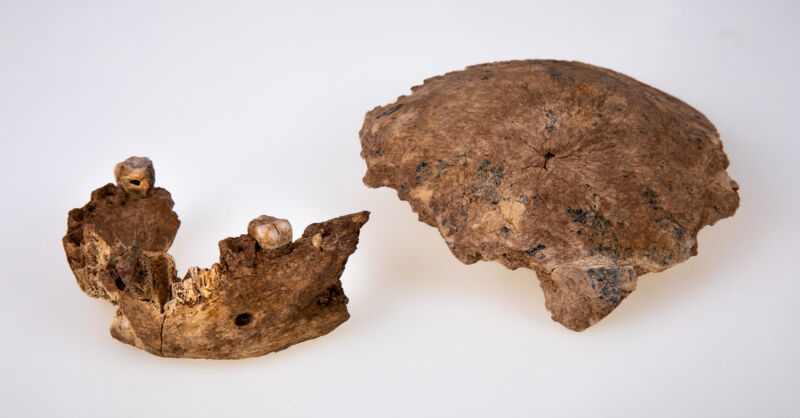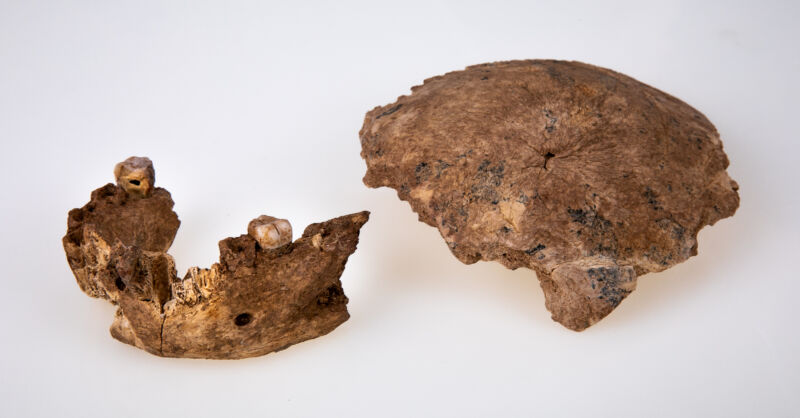
Enlarge (credit: Avi Levin and Ilan Theiler, Sackler Faculty of Medicine, Tel Aviv University)
It’s probably long past time to stop thinking of humanity’s nearest relatives as forming a family tree. Our close relatives like the Neanderthals and Denisovans clearly interbred both with us and each other. There are also indications that an older African lineage contributed to our ancestry; Neanderthals seem to have picked up some DNA from an even older lineage as well. All of that makes humanity’s ancestry look more like a river delta, with multiple channels separating and reuniting over time.
In today’s issue of Science, a group of researchers argue that they have found yet another channel that may sit at a key point in our past. A small collection of bones from a site in the Mideast seems to have a mix of archaic and Neanderthal-like features, suggesting that the bones may be related to the source of archaic DNA in the Neanderthal lineage. But the bones come from well after the Neanderthal lineage was distinct, and the artifacts found with them suggest extensive interactions with other human lineages.
A bit of a mix
The site is in Israel and is called Nesher Ramla. Extensive dating of materials found there suggests that the newly described bones date from roughly 120,000 to 140,000 years ago. That was, to say the least, a complicated time in our species’ history. Neanderthals and Denisovans had already inhabited Eurasia, which they shared with other archaic human lineages, along with Homo erectus. Modern humans were already present in Africa, which they shared with various archaic lineages, many of which had some modern features. And there is evidence that a lot of these groups were crossing paths in the Mideast.





